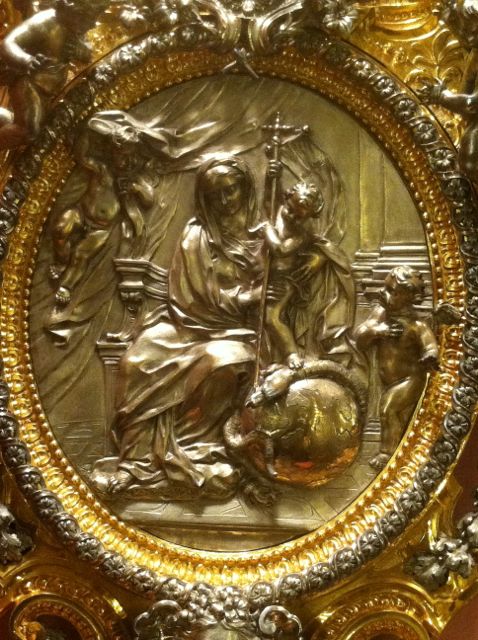
In this 16th century bronze rondel of Mary and Jesus, we see a swirling of movement so different from the staid and serene sculptures the MET has been offering us up till now in this Advent and Christmas series. Here everyone is moving. Everything is undulating, swirling, traveling, working for the redemption of the world. I love this rondel for its energy, dynamos, resistance to the status quo.
Here Jesus stands on the head of the serpent indicating Satan’s defeat. And although, as Augustine says, the serpent’s head is crushed, the tail, in it’s death throws, will sometimes whip around in its own destructive trembling – which is what we see when we see evils in the world and in the government and in the church – indeed- anywhere that people exist. There is no Evil left and yet there are still many evils. The distinction is essential.
Here Jesus crushes the serpent against the planet. I find that provocative. This is so rarely shown in art. It raises interesting theological questions which the theologians and clergy hate being asked as it mess with order and thrusts us back into chaos. Is the death of Satan part of the life we live on earth?
Jesus stands playfully. He almost dances around the staff which is always, in art, a symbol of prophetic announcement. This is John the Baptist’s staff which has been passed on to Jesus like a relay race baton. Jesus now reigns – even as a child. And Mary simply sits in regal power beside him with an arm extended for support as he learns the steps of salvation one at a time – like any human.
Do we realize that we are part of this redemption? Do we understand that we too have a co-creative role to play in this swirling drama? And do we realize fully that redemption looks a lot more like a dance than a procession? It is messy, demanding, dangerous and fun. And it requires that we are mindful of the steps without being rigid in them.

